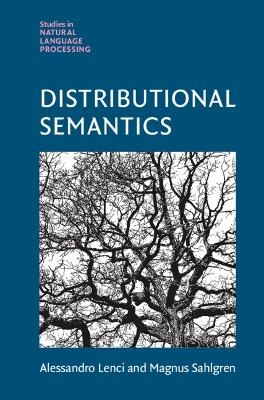
Distributional Semantics
Cambridge University Press (Verlag)
978-1-107-00429-0 (ISBN)
Distributional semantics develops theories and methods to represent the meaning of natural language expressions, with vectors encoding their statistical distribution in linguistic contexts. It is at once a theoretical model to express meaning, a practical methodology to construct semantic representations, a computational framework for acquiring meaning from language data, and a cognitive hypothesis about the role of language usage in shaping meaning. This book aims to build a common understanding of the theoretical and methodological foundations of distributional semantics. Beginning with its historical origins, the text exemplifies how the distributional approach is implemented in distributional semantic models. The main types of computational models, including modern deep learning ones, are described and evaluated, demonstrating how various types of semantic issues are addressed by those models. Open problems and challenges are also analyzed. Students and researchers in natural language processing, artificial intelligence, and cognitive science will appreciate this book.
Alessandro Lenci, PhD, is Professor of Linguistics and Director of the Computational Linguistics Laboratory at the University of Pisa. His research interests include distributional semantics, computational linguistics, and natural language processing. The recipient of the '10-year Test-of-Time-Award' from the Association for Computational Linguistics in 2020, he has published extensively and coordinated many projects on natural language processing and cognitive science. Magnus Sahlgren, PhD, is Head of Research for Natural Language Understanding at AI Sweden. Known primarily for research on computational models of meaning, Sahlgren's work lies at the intersection of computational linguistics, machine learning, and artificial intelligence. His doctoral dissertation, entitled 'The Word-Space Model,' was awarded the prize for the 'Most Prominent Scholarly Achievement of 2006' by the Stockholm University Faculty of Humanities.
Preface; Part I. Theory: 1. From usage to meaning: the foundations of distributional semantics; 2. Distributional representations; Part II. Models: 3. Distributional semantic models; 4. Matrix models; 5. Random encoding models; Part III. Practice: 7. Evaluation of distributional semantic models; 8. Distributional semantics and the lexicon; 9 Distributional semantics beyond the lexicon; 10. Conclusions and Outlook; References; Index.
| Erscheinungsdatum | 09.09.2023 |
|---|---|
| Reihe/Serie | Studies in Natural Language Processing |
| Zusatzinfo | Worked examples or Exercises |
| Verlagsort | Cambridge |
| Sprache | englisch |
| Gewicht | 831 g |
| Themenwelt | Geisteswissenschaften ► Sprach- / Literaturwissenschaft ► Sprachwissenschaft |
| Informatik ► Theorie / Studium ► Künstliche Intelligenz / Robotik | |
| ISBN-10 | 1-107-00429-2 / 1107004292 |
| ISBN-13 | 978-1-107-00429-0 / 9781107004290 |
| Zustand | Neuware |
| Informationen gemäß Produktsicherheitsverordnung (GPSR) | |
| Haben Sie eine Frage zum Produkt? |
aus dem Bereich


